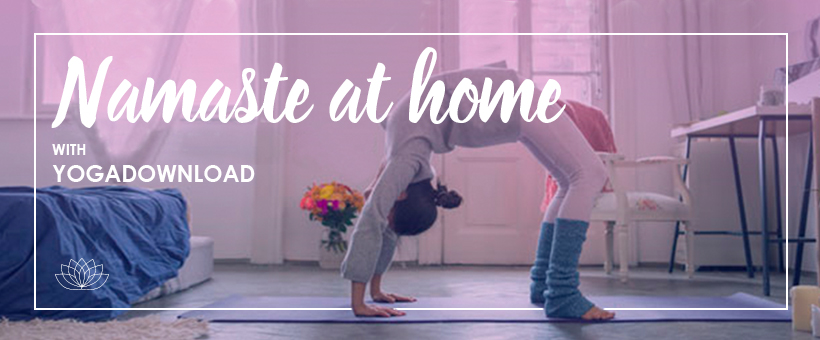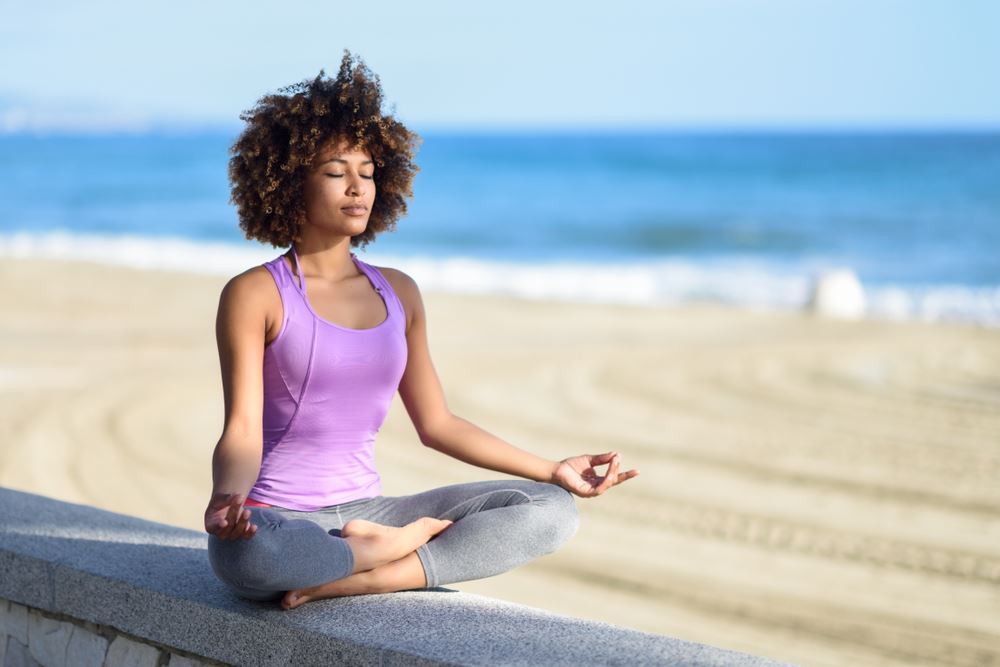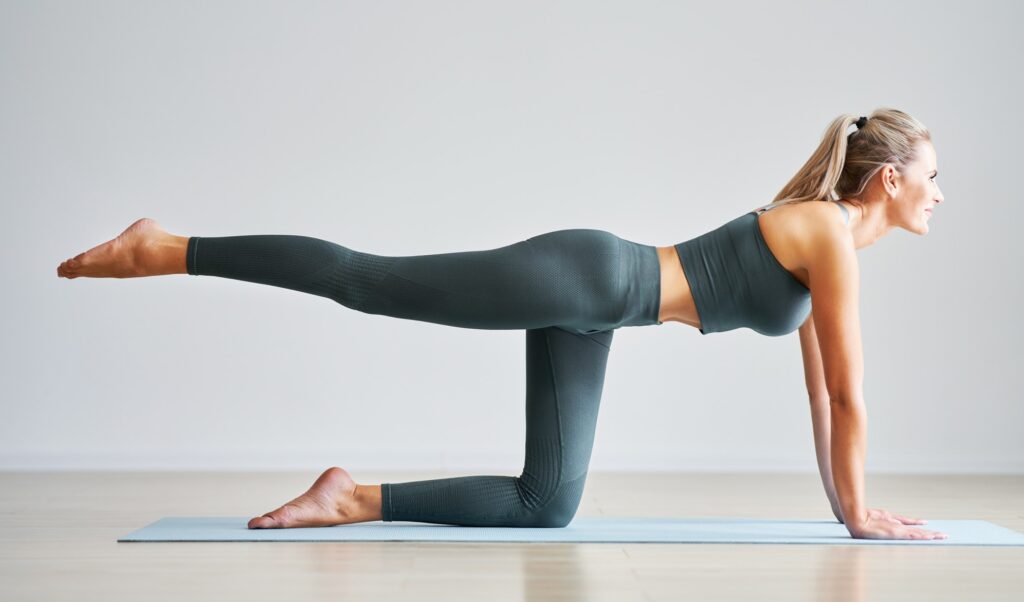Starting yoga
Like everyone else, you've heard of yoga. For a long time, you were convinced that this practice was reserved for a few initiates, or a handful of stars in need of notoriety. However, this is not the case! Yoga is a true wellness discipline accessible to all. It can offer you important benefits on a daily basis. Want to launch yourself into this unknown universe? No panic, we are here to help you!
WHAT IS YOGA?
First of all, let's go back to the basics. What exactly is yoga? Yes, we have to admit it, there are many preconceived ideas about this practice. Let us thus start by disentangling the true from the false to better apprehend this ancestral discipline.
Yoga was born many years ago in India. Initially, it was a spiritual practice that was transmitted from generation to generation. In Sanskrit, the word "yoga" means "union". For good reason, yoga was about the union of body and mind!
For the Indians, the body and the mind are complementary, and a harmony between the two is essential to well-being. Indeed, one cannot function without the other, and it is essential to find a balance between these two human constituents.
According to Indian beliefs, the human soul was also to be in union with the soul of the Creator. Each was to merge into the great Whole. Thus, yoga had these two main purposes: to unite the soul and the body, and to unite the human soul with the eternal soul.
However, yoga has subsequently crossed the ages and cultures. Today, this discipline is known throughout the world and is understood in different ways depending on the current. In the West, it is mainly perceived as a well-being technique.
It is therefore perfectly possible to use yoga simply to improve one's physical and psychological well-being. Not everyone practices yoga with a spiritual goal. Most of the time, the objective is to refocus on oneself and relax fully.

WHAT IS YOGA BASED ON?
The basis of yoga is inspired by principles found in Chinese medicine. Through various body postures, breathing exercises, and psychic exercises similar to meditation, yoga allows the release of tensions located in the chakras.
The chakras can be defined as energy points located in different parts of the body. Each chakra is connected to an organ, and may or may not allow its proper functioning. A chakra can also be linked to mental or spiritual faculties.
The tensions accumulated in the chakras can therefore be the cause of many physical and psychic ills in human beings. Releasing these tensions can sometimes solve various problems, but it can also lead to a general well-being.
WHAT ARE THE BENEFITS OF YOGA?
Concretely, in what situations is yoga recommended? First of all, you should know that yoga can be practiced without any specific reason. Yoga is primarily a good way to prevent illness and other difficulties rather than cure them.
You can practice yoga without any specific reason. This discipline represents a real way to preserve your mental and physical balance on a daily basis. It can also be your small moment of privileged relaxation of the day!
Apart from a daily well-being, yoga is also a good way to soothe different ailments of the body and mind. This practice can improve or even cure many small daily worries. Let's discover together which ones.

PHYSICAL BENEFITS
Yoga is based, among other things, on various physical postures. These are more or less similar to gymnastic figures. In the long run, they allow to gain in body flexibility and to tone up the skin
Yoga is a physical practice comparable to a sport. Like any sport, it helps to lose weight and refine one's silhouette. It is therefore an ideal discipline for those who wish to gently get rid of a few extra pounds, especially around the stomach.
Remember also that yoga allows you to relax your mind, but also... your body! After a yoga session, your muscular tensions will disappear. Some pains can also be soothed by yoga, especially back pain. You will suddenly feel lighter and more relaxed.
Therefore, yoga is known to fight against sleep disorders, especially by improving the quality of sleep. Indeed, this discipline helps to dive more easily into a meditative state of consciousness that could be called modified state of consciousness.
Thus, it becomes progressively easier to let go, and to let yourself go to sleep. The release of all internal tensions also helps the body to dive quickly and easily into a deep and restful sleep.
Finally, yoga can be a good ally if you suffer from digestive problems. For good reason, this discipline promotes harmonious digestion. We say goodbye to bloating, gas, abdominal pain and other joys!
THE PSYCHOLOGICAL BENEFITS
Beyond all the physical benefits, yoga is also a perfect remedy for many psychological disorders. Among these, stress is of course at the top of the list! Yoga allows you to let go, to refocus on the present moment, and to relax deeply.
This technique allows to considerably reduce stress and anxiety. By allowing ourselves even a few minutes of yoga a day, we could really change our perception of the world, and apprehend life more serenely.
Yoga is also a friend of self-confidence. Yes, doing yoga helps to boost your ego, and believe in your abilities! As you grow in this practice, you will feel more comfortable with yourself, and develop a better self-image.
Few know it, but yoga also improves concentration and memory. That's because in yoga, you learn to focus all your attention on the here and now. You learn to fully feel every bodily sensation.
Did you know that? The brain is a muscle like any other. Like all other parts of the body, it becomes more toned with practice. The more you exercise your brain, the more you will develop your cerebral capacities.
This deep exploration of movements and sensations allows you to escape from the frantic rush of daily life and the ultra-connected world of screens. It is therefore a real exercise of the mind! The mind is sharpened as you go along.

YOGA : INSTRUCTIONS FOR BEGINNERS
That's it, it's decided, you're taking up yoga! We can only welcome this beautiful initiative. However, rather than diving head first into an unknown universe, follow our little guide. In a short time, you will become an ace in the field!
STEP 1: FIND THE IDEAL PLACE
To do yoga in good conditions, you must already have a suitable setting. In principle, yoga requires little or no equipment. One can thus easily practice it everywhere.
In fact, you have probably already observed people doing yoga in the park. However, when you are new to yoga, it is always better to choose a place where you feel comfortable. The important thing is to be fully comfortable both physically and psychologically.
You must therefore be free of your movements, and not fear the gaze of others. It is also recommended to choose a quiet place, where you will not be disturbed. Thus, you will be able to concentrate more easily and let go. Indeed, disconnecting from the outside world is not easy for a novice.
A tip: also avoid practicing yoga on a floor that is too soft, or too uneven. For example, don't do yoga on your bed or in the middle of a mountain. For example, choose a small gym mat placed directly on the tile floor.
STEP 2: CHOOSING THE RIGHT OUTFIT
The second important step to doing yoga in good conditions will be the choice of your outfit. Yoga involves a lot of physical exercise. It is therefore imperative to wear clothes in which you feel comfortable.
We eliminate immediately the clothes too tight, too narrow, or which lack of elasticity. Instead, choose sportswear, such as leggings and a tank top. This way, you will be able to move easily, and without hindrance!
Also, be careful with jewelry, piercings and other accessories that can get in the way or hurt you during certain movements. During your session, get rid of as many unnecessary objects as possible. You will move more serenely.

STEP 3: CHOOSE THE RIGHT TIME
Of course, there is no "ideal" time to do yoga. Everyone practices it according to their desires, and especially according to their schedule. So don't think that yoga is not for you if all these conditions are not met!
However, here are some recommendations for a totally optimal session: choose the morning or the evening to do yoga. In the morning, you are usually full of energy, and yoga will help you start the day well.
In the evening, it's a calming time. You let go of all the tensions of the day. This is your time to relax. Yoga will help you have a good night's sleep, and get a good night's sleep to face the next day.
Before doing yoga, avoid eating. Indeed, certain postures of yoga are rather acrobatic. It is thus better to avoid a copious meal just before. The ideal is to wait at least 2 to 3 hours after eating.
To avoid being disturbed during the session, consider going to the small corner before starting, and have a bottle of water nearby. Yoga sessions can sometimes be quite physical, and it is important to stay well hydrated during and after an effort.
STEP 4: FOCUS ON EASY POSES
As a beginner, it is important to avoid getting into very complex postures from the start! This could discourage you, and you will not fully benefit from your session. It is better to start yoga gently, and at your own pace!
THE BUTTERFLY POSE
Among the postures adapted to the beginners, why not opt for the "butterfly posture". The butterfly pose consists in being in a sitting position, and stretching your legs, then folding them up, so that the two soles of your feet meet. Then, you will lower your upper body towards your legs, so that you can hold your feet with your hands. The spine should always remain straight. Then make slight movements with your knees, similar to flapping your wings. The butterfly pose is ideal for relaxing the entire pelvic area and the lower body. This yoga exercise also tones the muscles of the back, and therefore relieves tension for a long time.
THE HEAD DOWN DOG POSTURE
The dog pose is also simple to practice. It simply looks like a dog stretching, hence the name. Start by standing on all fours with your hands flat on the floor and your fingers wide open. Next, stretch your legs and arms out, so that your body is elevated. The feet should be about the width of your pelvis. Once the posture is adopted, it will be enough to put you on the tiptoes by pushing forward as much as possible. This yoga technique allows you to strengthen your legs while relaxing your muscles. The result: your legs are less heavy, more toned, and more shapely. The dog pose also helps relieve tension in the back.
THE TREE POSE
Finally, the tree pose is also appreciated by beginners. This one allows, among other things, to work on concentration, balance, body strength, and grounding. To begin, stand with your feet flat on the ground. Then, raise one leg, and come to put your foot against the other leg. The hands come to place themselves against each other, a little bit in prayer position. If you wish, you can close your eyes to better appreciate your feelings. Breathe gently while fixing the point of your choice, and trying to keep your balance. Keep your eyes on this point, as it helps you maintain your position without wobbling. Next, perform the exact same exercise with your other leg.
STEP 5: TRUST YOURSELF
Before we close this guide, let's not forget one very important tip: trust yourself! You will probably hear everything and anything about yoga. You will also tend to want to compare yourself to others, or do better than your neighbor.
This is a trap you should never fall into! The important thing is to progress, not to conform to other people. Observe what you do better than the day before, without ever judging yourself or trying to be like anyone else.
In all circumstances, listen to your intuition, and test several exercises to find the one that suits you best. Each person is different, and it may take several tests before you find the one that really fits you.


